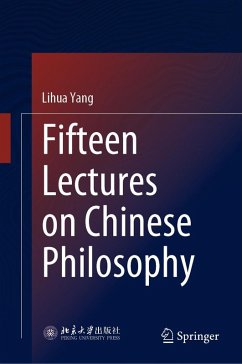
Tetsugaku Companion to Feeling (eBook, PDF)
Versandkostenfrei!
Sofort per Download lieferbar
96,95 €
inkl. MwSt.
Weitere Ausgaben:

PAYBACK Punkte
48 °P sammeln!
This edited volume is the first in English that covers the philosophy of feeling and related topics in Japanese philosophy on Nishida Kitaro and fellow thinkers. Part I focuses on Nishida Kitaro's philosophy of feeling, including, but not limited to, comparisons with Tanabe Hajime, Koyama Iwao, and provides coverage of Buddhist, moral and Chinese philosophy. Part II goes beyond Kitaro into topics such as Japanese aesthetics, Nietsche's reception in Japan, and the philosophy of AI. This is a comprehensive scholarly text on feeling in Japanese philosophy, aimed at researchers and students workin...
This edited volume is the first in English that covers the philosophy of feeling and related topics in Japanese philosophy on Nishida Kitaro and fellow thinkers. Part I focuses on Nishida Kitaro's philosophy of feeling, including, but not limited to, comparisons with Tanabe Hajime, Koyama Iwao, and provides coverage of Buddhist, moral and Chinese philosophy. Part II goes beyond Kitaro into topics such as Japanese aesthetics, Nietsche's reception in Japan, and the philosophy of AI. This is a comprehensive scholarly text on feeling in Japanese philosophy, aimed at researchers and students working in the field.
Dieser Download kann aus rechtlichen Gründen nur mit Rechnungsadresse in A, B, BG, CY, CZ, D, DK, EW, E, FIN, F, GR, HR, H, IRL, I, LT, L, LR, M, NL, PL, P, R, S, SLO, SK ausgeliefert werden.












